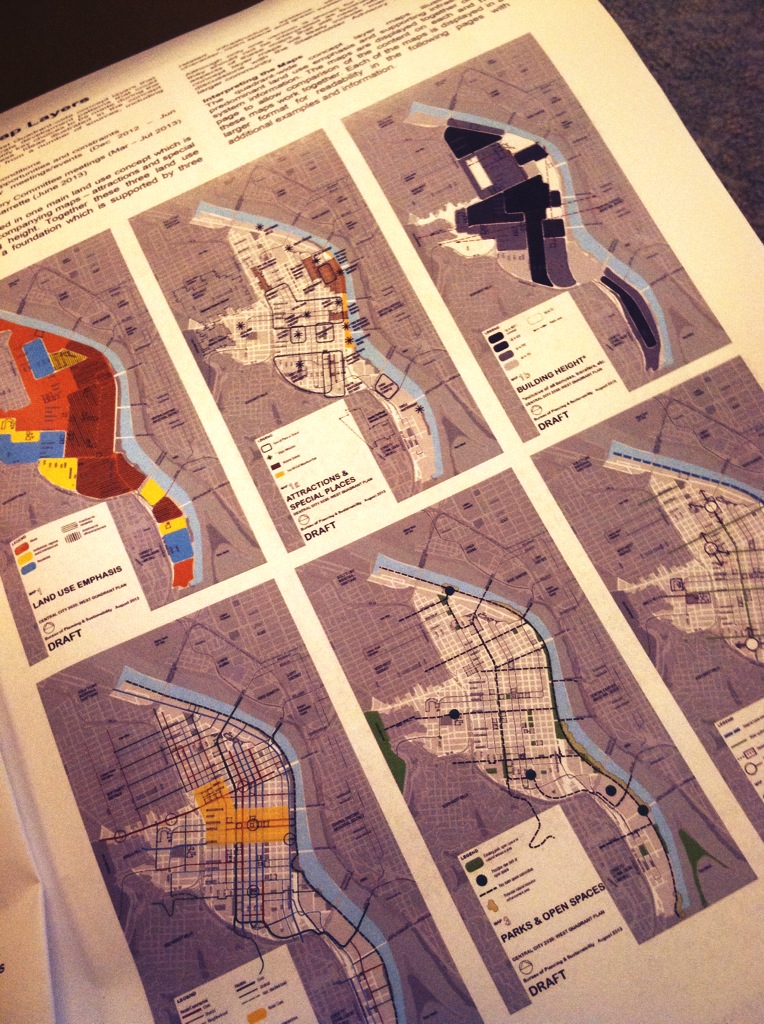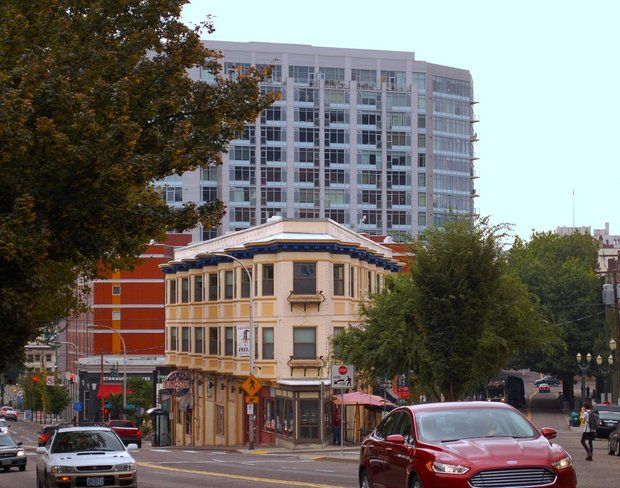Livable Portland? A New Plan
There’s something brewing in Portland, and it’s probably not what you’d expect. As we speak, planners and stakeholders are currently working on arguably the most important planning document since 1988: the Central City Plan 2035. Technically open to the public, the planning process has been comparatively quiet. After the charrette process, it has now transitioned into monthly meetings with primarily stakeholder involvement. The process itself is fairly standard: the floor is open to public comment (limited to two minutes), there is a summary of the progress thus far, presentations for the topic at hand, followed by stakeholder debate. At the moment, there’s also voting on several nearly finalized “layers” of the plan, specifically for the West Quadrant (Downtown, Southwest, Old Town, the Pearl, and the uber-cool West End, where we recently held our PARK(ing) Day event).
Lately, though, there has been one issue getting a bit more press: Height limits. Raising them, to be more exact, and in more neighborhoods than one.
So what’s the problem? Portland is known for its progressiveness as most people know. Wikipedia even says “Because of its public transportation networks and efficient land-use planning, Portland has been referred to as one of the most environmentally friendly, or "green", cities in the world.” We know this. It’s the reason why planning professionals flock to see the closest thing to Europe in the US with their own eyes. For that matter, it’s the reason I moved here. But I think the culture of this place would change dramatically with higher buildings. For starters, living in tall buildings has been discouraged for decades - the lack of connection to the ground floor can cause isolation and the height alters the pedestrian experience on the street as well due to shade, wind, and the sheer lack of human scale. The best cities in the world are low-rise - we know this, too.
So why does Portland need to change? One of the best qualities of the city is the smaller feel and Portlanders cite that frequently. We don’t want to be LA or Seattle. We want the Jane Jacobs street-as-room (as does everyone else). Less Manhattan, more Brooklyn, if you prefer. The stakeholders, however, think otherwise, with a vote on the issue getting an overwhelming majority vote for the added height.
The reason this is such an important thing to pay attention to is the impact the new city plan will have on the future of the city. From the Portland Bureau of Planning and Sustainability website: “Central City 2035 (CC2035) will update the plan and policies for downtown and central areas of Portland, Oregon. CC2035 will address challenges and opportunities in the Central City to ensure this unique economic, transportation, cultural and educational hub will be a vibrant resource for all Portlanders over the next 25 years.”
It’s not hard to put two and two together, and I’m certainly not the first to do so. A letter was recently submitted to the Oregonian by Michael Mehaffy, Executive Director of the Sustasis Foundation, and Dr. Suzanne H. Crowhurst Lennard, Co-founder and Director of International Making Cities Livable (both here in Portland). The letter has attracted numerous comments, and it’s clear that people feel passionately about the issue either one way or the other. As the authors put it:
“In our work we have seen, over and over again, city boosters who made horrible mistakes in a misguided attempt to be trendy and "modern." What's worse, they destroyed the urban treasures they already had -- traded away for a few shiny baubles that quickly became tarnished. Today, many of those leaders come to Portland to learn our lessons. How ironic it would be if we, of all people, destroyed our own livable heritage in the dubious pursuit of an illusion of modernity.”
And I couldn’t have said it better myself.
I’ll be following this issue closely, and adding my public opinion as much as I can. Read the full article here, add your comment, and in the meantime, swoon over the truly progressive planning process courtesy of David Sim of Gehl Architects following the disaster in Christchurch.
[youtube=http://www.youtube.com/watch?v=wXurDdJu5hc&w=560&h=315]


